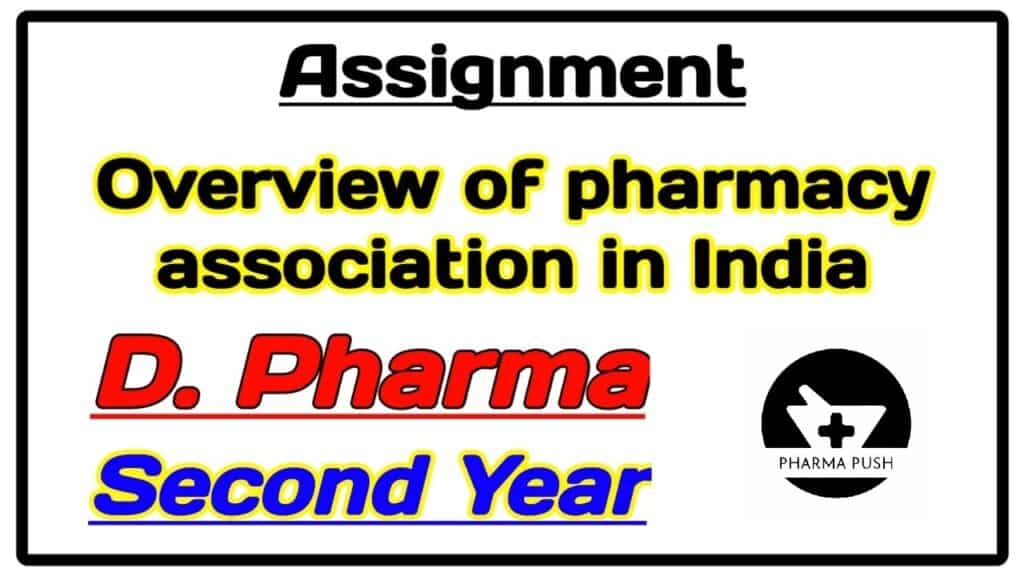Abstract
The issue of buying medicines online has exercised the pharmacy and wider healthcare community over the last decade. The Internet offers another choice to people who seek medicines, with or without a prescription, and many commentators have listed associated risks and benefits. In this review article, peer-reviewed literature and associated commentary are examined to illustrate the evolution of online pharmacy. Whilst it is recognised that the issues of counterfeit medicines and wider use of consumer medicines information on the internet are closely associated with this issue, these topics are beyond the scope of this paper.
The material considered here reveals differing perspectives about consumer motivations and experience when buying medicines online. Negative perceptions of online medicines
supply are reflected, such as the procurement of restricted medicines without a prescription, and the lack of information offered to complement the product. There is also a strong seam that documents good practice within online pharmacy, even from the earliest anarchic pre-regulation phase. Whilst the benefits of 24/7 access and privacy seem to be well substantiated, cost benefits are more contested. Despite evidence that some illicit medicine procurement occurs online, research contends that the main sources of diversion remain dealers, family/friends and legitimate medical prescriptions.
Moreover, regulatory strategies – despite cynicism that the Internet could ever be regulated – seem to have had a positive impact for illicit controlled substances. Adequate consumer ‘ehealth literacy’ is necessary, alongside effective regulation, to minimise harm, but even the most recent research shows serious expertise deficits within the general population. Online pharmacy has a place in future medicines provision, and could explore its potential to provide cognitive services alongside medicines.
Bricks-and-mortar pharmacies should reflect upon the value that they add to the transaction in order to avoid losing a younger ‘wired’ generation of future parents and carers.
INTRODUCTION
The Internet has developed over the last decade into a first-line information source about all aspects of life for many people. Interest in purchasing products online has similarly increased, including medicines. This review of peer-reviewed literature and associated commentary will describe a number of issues associated with online pharmacy operations, within the wider healthcare context, and will conclude with some ideas for future developments.
WHAT DO WE MEAN BY ONLINE PHARMACIES?
Medicines are available for sale both on sites identifying themselves as ‘pharmacies’ and those that do not. In parallel with other types of online retailers, the market is split between those who extended their offline presence (like Boots and Walgreens) and those who entered the market as a purely online brand (like Pharmacy2U and Kwikmed). Gallagher and Colaizzi asserted in 2000 that ‘As Internet pharmacy has grown in the past year, it has become apparent to the major pharmacy chains that they must pursue the online route as well to prevent a loss of market share’. An online pharmacy might fulfil any or all of a number of functions:
- The sale or supply of medicines, including repeat prescription services.
- The sale or supply of other healthcare products.
- Providing information about medicines.
- Providing advice about symptoms.
- Hosting online support groups.
Online pharmacies are utilising different forms of technology to extend and enhance their site functionality, such as video streaming on health topics and mobile apps and text reminders for ordering repeat prescriptions. The inclusion of personal records of regular prescriptions also increases the involvement that a consumer might have with the online pharmacy.
FACTORS AFFECTING THE PURCHASE OF MEDICINES ONLINE
A paper as early as 1999 indicated that ‘the prototypical web consumer leads a wired lifestyle and is time starved’, and that this was more likely to predict online purchasing behaviour than demographic factors. The authors also asserted that looking for product information on the Internet was the most important predictor of online buying behaviour. A study of 300 UK consumers in 2004 resulted in a more sophisticated consumer typology that describes different motivations for buying medicines or healthcare products online.
Box 1: Market segmentation of online medicine consumers (Gurău 20053)
Consumer A: young, with low revenues, less interested in online service quality and less sensitive to online risks, but concerned about price and online payment security.
Consumer B: middle-aged, with good purchasing power, requiring privacy and discreetness of delivery.
Consumer C: middle-aged, high-revenue customer that requires a high service quality, anonymity, rich online information and choice.
Customer D: old-aged, with low or medium purchasing power, attracted by the convenience of online shopping and home delivery, but highly concerned about online transaction risks.
Qualitative work by the author of this review in 2001 challenged British students aged 11-18 to think about whether they might buy medicines online. Although they reported that they and peers had purchased other products online (such as music and clothing), they were more hesitant about buying medicines. When Gurău presented UK consumers with his typology of pharmacies A-D (Box 2), the ‘D-OTC’ pharmacies were preferred by many participants. He felt that this was perhaps because “of their clear conformity with safety standards and regulations”. He noted that younger customers (18-25 year-olds) showed greater willingness to buy from ‘C No prescription’ pharmacies. Similarly, a study in Belgium showed a greater acceptance of an online distribution route for OTC medicines among consumers aged 45 or less.
Box 2 – Typology of online pharmacies (Adapted from Gurău, 20053)
Send prescription: An existing prescription, written by a licensed practitioner, is sent to the online pharmacy by post, fax or email.
Online consultation and prescription: Customers have to register with the pharmacy site, and then complete an online questionnaire. Based on the submitted information, a doctor prescribes a treatment, and the online pharmacy sells the medicines to the patient.
No prescription required: Regulated medicines are sold without prescription. The site states that responsibility for the selection and purchase of medicines rests with the consumer.
OTC medicines: Pharmacies selling only non-prescription medicines, including vitamins, dietary supplements and homeopathic remedies.
Perceived benefits and risks of purchasing medicines online
Purchasing medicines online offers several perceived benefits and risks:
You May Like: Role of Community Pharmacists in preventing Antimicrobial Resistance
You May Like: Overview of Pharmacy associations in India
You May Like: Dosage / Medication Reminder Aids Assignment pdf
You May Like: Jan Aushadhi and other Generic Medicine initiatives in India
Perceived Benefits:
- Convenience: Online pharmacies provide convenience, allowing individuals to order medications from the comfort of their homes without the need to visit a physical pharmacy.
- Accessibility: Online pharmacies may offer a wider range of medications, including those that are not readily available at local pharmacies. This can be particularly beneficial for individuals living in remote areas or those with mobility issues.
- Privacy: Some people prefer the privacy afforded by online pharmacies, especially when purchasing medications for sensitive health conditions.
- Cost Savings: Online pharmacies may offer competitive pricing and discounts, potentially resulting in cost savings for consumers, especially for medications that are not covered by insurance.
- Information Access: Online pharmacies often provide detailed information about medications, including usage instructions, side effects, and potential drug interactions, helping consumers make informed decisions about their health.
Perceived Risks:
- Counterfeit Medications: One of the most significant risks of purchasing medicines online is the possibility of receiving counterfeit or substandard medications that may be ineffective or harmful.
- Lack of Regulation: Some online pharmacies operate without proper regulation or oversight, making it difficult to verify the authenticity and quality of the medications they sell.
- Privacy and Security Concerns: Sharing personal and financial information online poses privacy and security risks, including the potential for identity theft or unauthorized access to sensitive data.
- Drug Interactions: Without proper medical supervision, individuals purchasing medications online may be at risk of harmful drug interactions, especially if they are taking multiple medications simultaneously.
- Delayed Delivery and Reliability: There is a risk of delayed delivery or non-delivery of medications when purchasing online, which can be problematic for individuals who depend on timely access to their medications.
- Legal Issues: Depending on the jurisdiction, purchasing certain medications online without a prescription may be illegal or against regulatory guidelines, leading to legal consequences for both the buyer and the seller.
Overall, while online pharmacies offer convenience and accessibility, consumers should exercise caution and ensure that they purchase medications from reputable and licensed online pharmacies to minimize the associated risks. Additionally, it’s advisable to consult with a healthcare professional before purchasing medications online, especially for prescription medications.
REGULATION OF ONLINE PHARMACIES
There are good examples of national procedures to safeguard consumers. The General Pharmaceutical Council in Great Britain has an Internet pharmacy registration procedure, during which a green cross electronic logo is issued to qualifying pharmacies with a unique registration number. The US National Association of Boards of Pharmacy run the ‘Verified. Internet Pharmacy Practice Sites’ (VIPPs) programme, where VIPP-accredited pharmacies can be sought online by consumers and are similarly identified by a logo.
Some would argue that it is all too easy to fake such accreditation marks, if a rogue outlet so wished. The bigger question, however, is whether consumers recognise – and act upon – the information provided by the presence or absence of such logos. If not, then there is little motivation to even try and circumvent the regulatory system. Tony Delamothe, web editor of the BMJ, mused upon these very issues in 2000. He noted that one of the potentially harmful developments had been a proliferation of web content quality measures that had not been validated and could thus do more harm than good. He also noted the arguably greater impact of the market on rogue practice following the crash in share value of drkoop.com which had intermingled information and advertising.
THE FUTURE FOR ONLINE PHARMACIES?
Pharmacies fulfil a number of roles, many of which are linked to other parts of the health service, and a sustainable future for pharmacy includes an online platform. There are examples of plans for integrated e-healthcare systems incorporating web-based pharmacy interfaces that are accessible by pharmacists and patients alike. There has been a call to develop secure ‘patient portals’ that offer communication, content, commerce and community – what the authors of the paper called the “4 basic Cs” of the Internet. This perspective was offered in the context of supporting independent living for older people, focusing on wellness rather than anticipating illness.
There are acute situations for which online pharmacies will never be the first choice, but consumers of long-term medicines and health care products have compelling reasons to favour an online channel. Beyond the supply of product, online pharmacies may wish
to consider how they might provide services online for which payment is made. As yet, online pharmacies are not actively promoting online adherence support for patients. Rather, some provide information about compliance support devices that can be accessed in-store.
Many pharmacies are extending their online functionality, and some have a presence within social network systems like Facebook. Whilst writing this review, some of the UK and US pharmacy facebook sites were visited: features were associated with wellness and a wider range of healthcare products. A social networking role for pharmacists in “microand macroscale projects that inform the public about health issues, mobilize partnerships to confront public health issues, and engage in research about new insights into health solutions” has already been proposed.
REFERENCES
- Gallagher JC, Colaizzi JL. Issues in Internet pharmacy practice. The Annals of Pharmacotherapy. 2000; 34; 1483-5.
- Bellman S, Lohse GL, Johnson EJ. Predictors of online buying behaviour. Communications of the ACM. 1999; 42: 32-8.
- Gurău C. Pharmaceutical marketing on the Internet: Marketing techniques and customer profile. Journal of Consumer Marketing. 2005; 22: 421-8.
- Gray NJ, Klein JD, Cantrill JA et al. Buying medicines on the Internet: young consumers’ perceptions. Journal of the American Pharmaceutical Association. 2002; 42: 313.
- Simoens S, Lobeau M, Verbeke K et al. Patient experiences of over-the-counter medicine purchases in flemish community pharmacies. Pharmacy World and Science. 2009; 31: 450-7.


